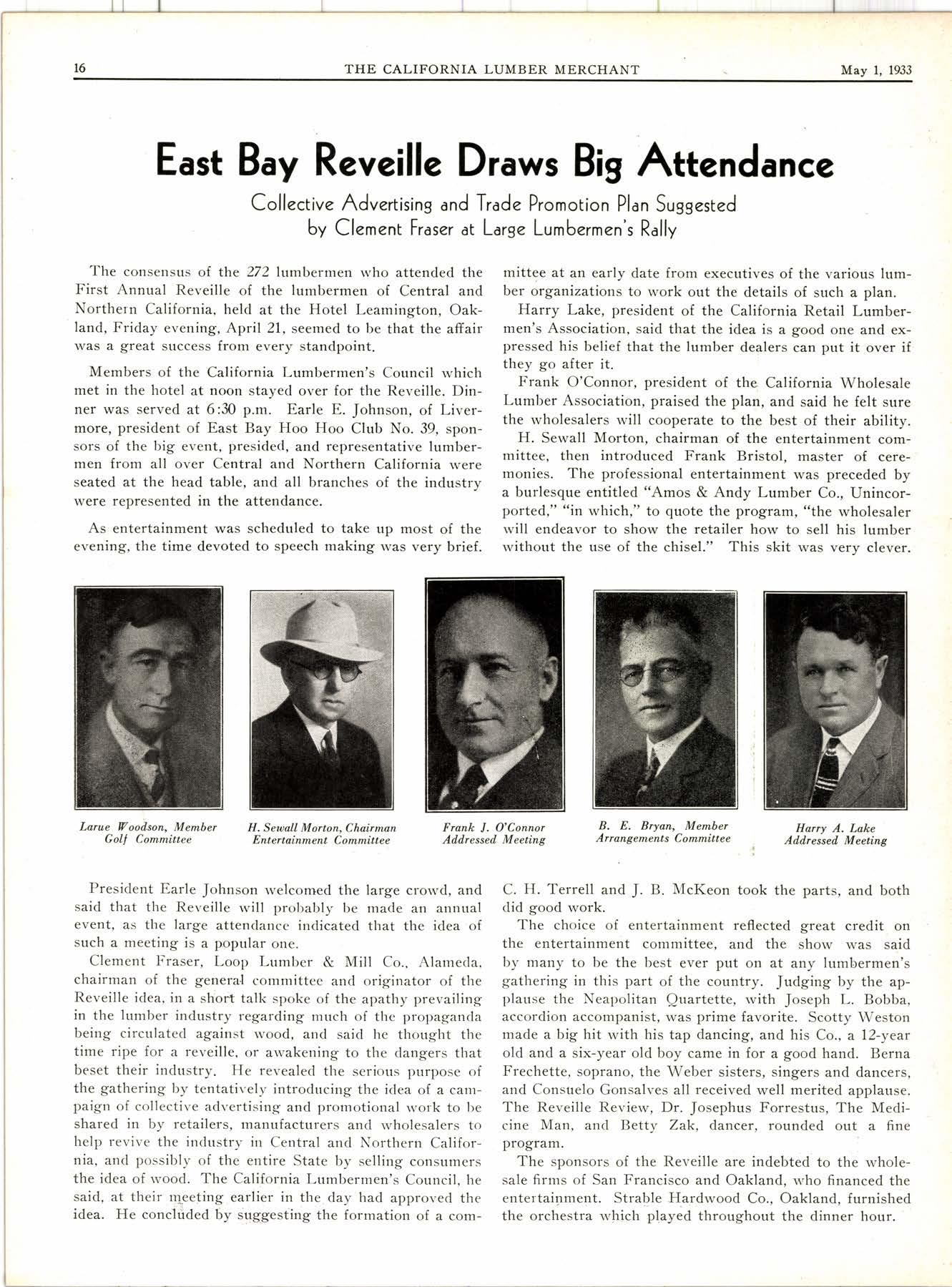
2 minute read
STNTRON r|OTORLESS ELECTRIC HAMDIERS
"Only the Piston movest' rA to 2-:unch Drilling Capacity
Veights l0 to 20 lbs.
Priced at t100 and up.
Etectrlc Dr{lls' All tlzcr
Portoblc Gr{nder and Bcnsh Tlrpel
'Goncrete Ourfaccm
Ctraod Flerltle th.ttc and Eq$llrnrcnt
Elecdc.Band tawr
Srndem Pol|rhcas' BuffGrt commodities that it would be more judicious to exarnine the whole field of transportation rates rather than those relating solely to basic commodities.
This welcome decision'is thought to be purposely related to President Roosevelt's determination to overhaul and revise the transportation industries' financial and service structure as an essential part of industrial readjustment. The petition was, .therefore, most opportune; and the general thesis of the lumber industry that excessive railway rates are not only one of the contributing causes of the present depression but a potent factor in prolonging it, was so convincing that it created an irrefutable logical basis for lowering railway rates as an essential element in the improvernent of the general industrial situation.
The agricultural interests are enthusiastic in their praise of the forest industries' presentation of the barrier rigid railway rates, inherited from boom times, have been to a uniform deflation of prices toward a new level of mutual conformity. On this point the Compton statement said in part:
"Rate reductions on lumber and timber products alone would, of course, be beneficial to the industry, at least temporarily and in substantial measure, but the larger and more important interest involved is in such reductions, at the same.time, of rates on other commodities as will permit the substantial restoration of traffic and consumption of other commodities which supply the purchasing power for the purchase and use of lumber and timber products. Primarily the buying power of agriculture and the rural communities must be restored. As a matter of public interest it is essential that the freight rate level shall conform reasonably to the general price levels now prevailing in the United States. A downward price trend continuing o\rer a period of years may not be disregarded by transportation agencies, whatever be the interests involved in the maintenance of trigh freight rates. High rates do not necessarily mean high income. Rates cannot be reasonable which progressively and relentlessly destroy the traffic and impoverish its sources."
It now seems probable that an effort to remedy the perennial transportation problem, which, when it was made, seemed to be just another routine thrust at permanently entrenched excessive transportation rates, may turn out to be the determining factor in an early and comprehensive revision of railway rates, upon which it will be possible to build.the structure of new prosperity.
The comment is made in Washington that the railway iate triumirh is an impressive demonstration of the incalculable practical value of intelligent and alert industrial association activity in the solution of broad economic problems. One observer points out that if the intervention of the National Lumber Manufacturers Association in speeding up emergency action in the reduction of railway freight rates should accomplish nothing more than to bring about within six months what might otherwise have. requirecl two years, it will mean an expansion of millions of dollars in the gross income of the forest industries.










